Visual Studio Edit and Continue Setting
How to set up your PS5 or PS5 Digital Edition
Got your hands on a new PS5? Here's how to set it up
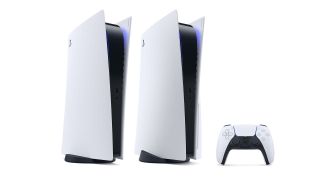
(Image: © Sony)
Just picked yourself up a PS5 or PS5 Digital Edition? Then you're going to want to know how to get your new PlayStation set up as soon as possible.
Fortunately, setting up the PlayStation 5 is a pretty simple affair. While you can't set it up using an app like you can with the Xbox Series X, the whole process is pretty simple and quick – and even offers you the opportunity to install some games or apps while you set the console up.
Ready to get stuck into next-gen PlayStation? Then read on for our step-by-step guide on how to set up your PS5 or PS5 Digital Edition.
- Check out our reviews of the Xbox Series X and Xbox Series S
- Here's our PS5 review
- Where to buy PS5: all the latest price, pre-order and stock updates
Setting up the PS5 stand
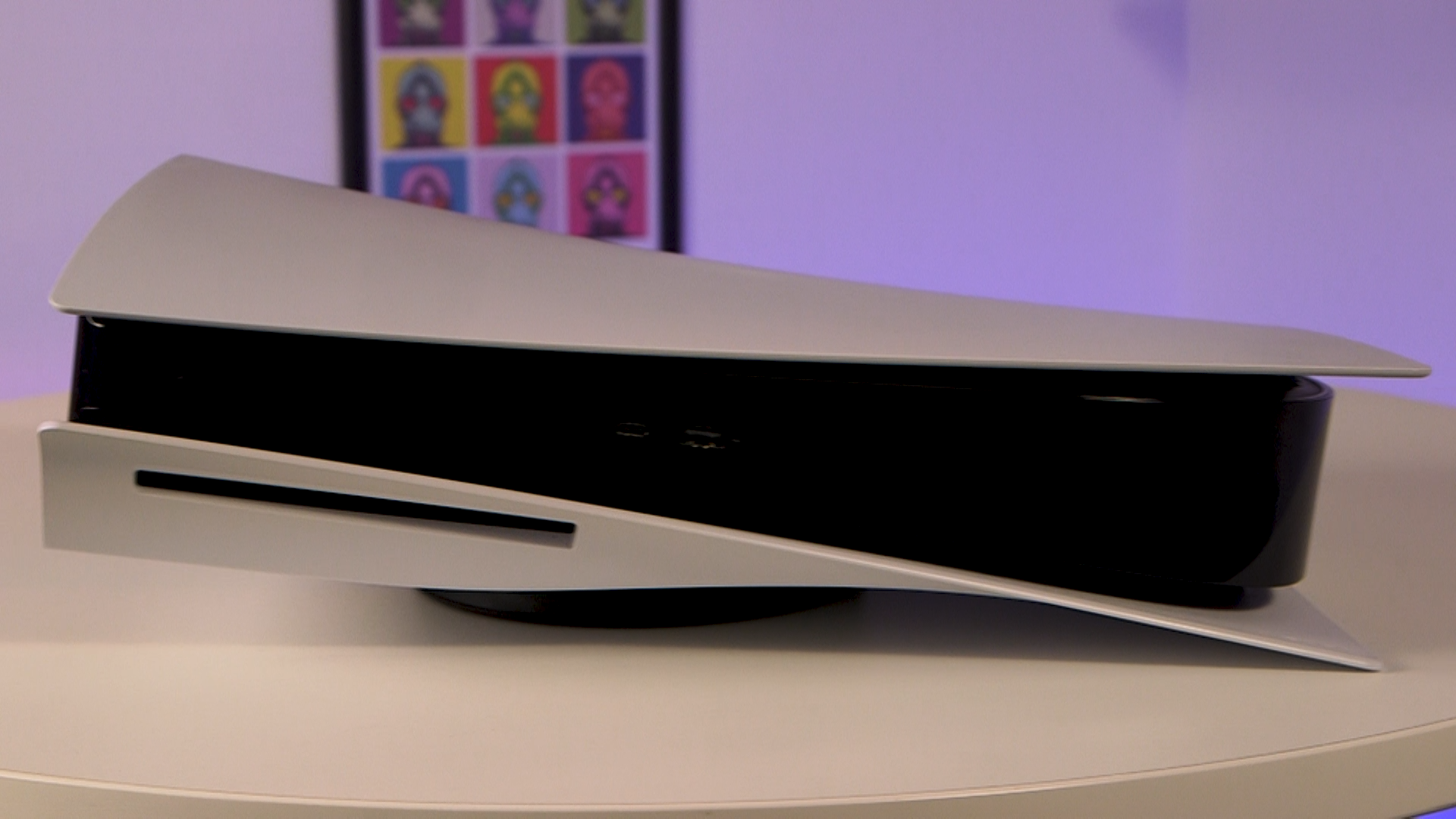
Whether you want to place your PS5 horizontally or vertically, you're going to need to set up the PS5 stand before you place your console in its desired location. Yes, the PS5 could stand up or lie flat by itself, but your console won't be particularly stable if you do this a– nd the last thing we want is a toppling PlayStation.
Setting up the PS5 stand can be a a bit of a pain, but it's fairly simple. Take out your stand – the black, circular plastic base that's in your box – and turn it over. Rotate the top and bottom part of the stand in opposite directions until you hear a click. A small compartment should be visible that has a screw inside. Take the screw out and put it somewhere safe.
Place the PS5 on a flat surface, with the rear side of the console facing up – the ports at the back should be turned upward. Next, remove the screw hole cap from what would be the bottom of the console (if it was sitting vertically). This cap should come out easily if you use your fingernails or something thin to leverage it. Put the cap back into the cap-shaped hole in the base, where you got the screw from.
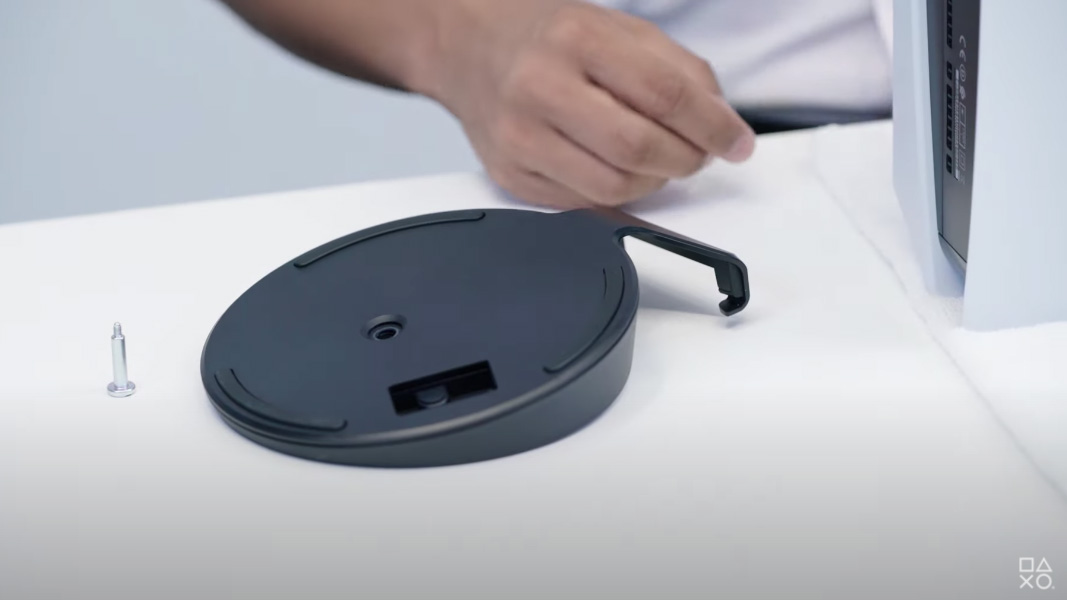
Now to attach the base. If you're putting the console vertically, you need to attach the base with the hooks sliding in just below the power port on the back of the console. Make sure to rotate the stand back to its original position, with the hook parallel to the raised plastic part. The bottom of the console should comfortably fit the base.
If you're placing the console horizontally, rotate the base until the raised plastic part is slightly to the right of the hook. Next, align the stand with the marked area on the body, with the hooks slotting into the section which shows PlayStation symbols – located on what would be the rear left-hand side of the console if it was standing vertically.
When the stand is comfortably aligned, insert the screw into the base and secure it tight – this can be done with a flat-headed screwdriver, or a coin if that's all you have.
The PS5 Quick Start Guide, included in your PS5 box, will also guide you through how to attach the stand along with diagrams.
Connecting your console
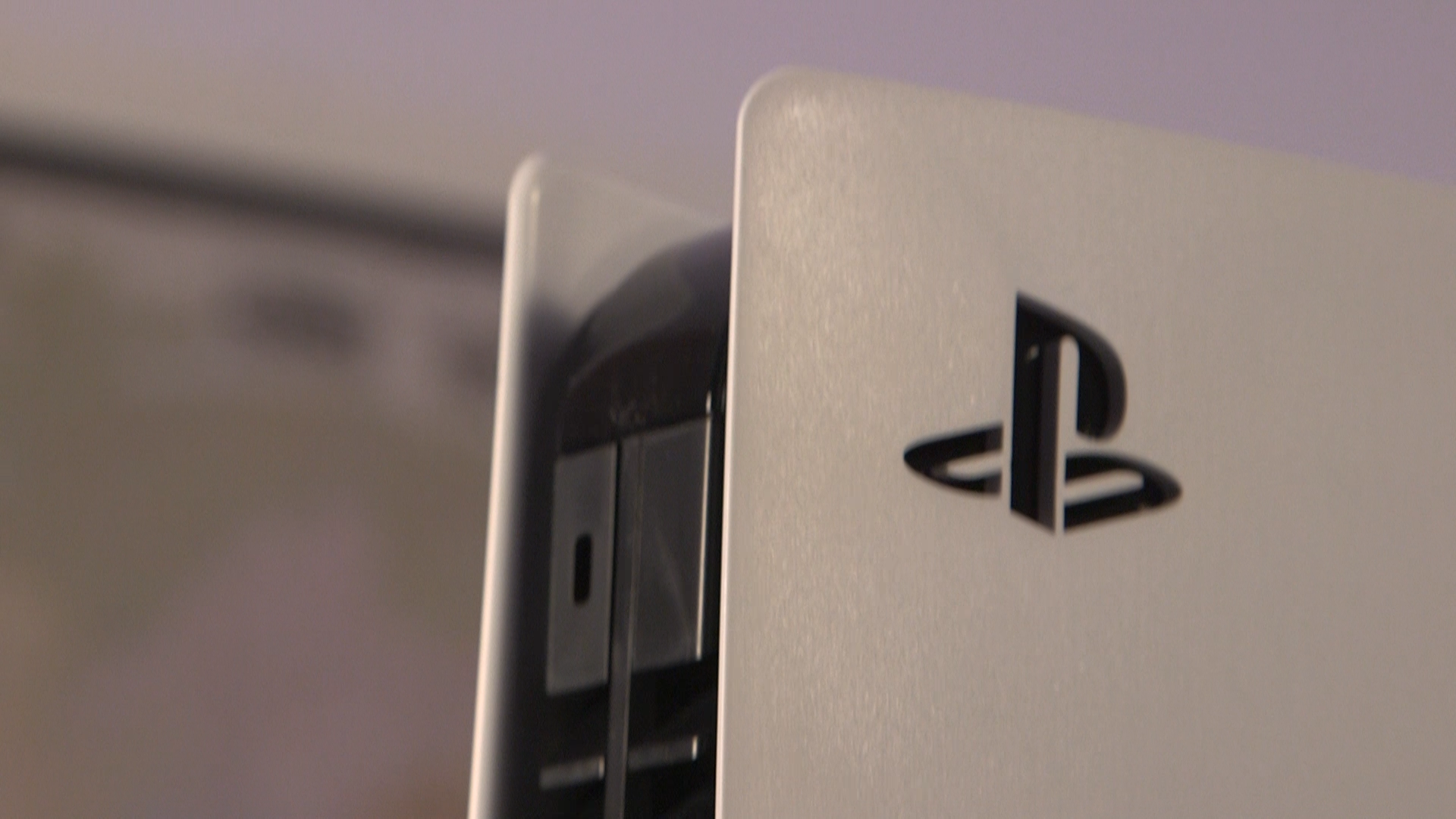
The next step to getting your new PlayStation set up is to get your console plugged in. Firstly, find the spot you want to house your PS5 in: make sure there's room for ventilation and a plug socket or extension cable nearby.
Next, attach the power cable from your PS5 box. Plug the cable into the back of the console and into your power supply or extension cable. You'll know the power cable as it's the one with a plug attached to the end. Stick it in the corresponding port at the back of your console.
Once your power is hooked up, use the HDMI cable that came with your PS5 or PS5 Digital Edition to connect your console to your TV. Your TV should have a labeled HDMI port on the back somewhere, while the PS5 HDMI port is the one next to the power port.
It's worth noting that, to allow for 4K at 120Hz visuals on the PS5 and PS5 Digital Edition, you need to use the HDMI cable that comes with your console (or another HDMI 2.1 cable) and connect it to a compatible HDMI 2.1 port on your display.
Not all TVs are HDMI 2.1 compatible, but any 4K TV with an HDMI port will support HDMI 2.0 for 4K at a 30Hz frame rate. The HDMI cable included in the box will work with both a regular HDMI 2.0 port and an HDMI 2.1 port, so you can use it either way to get 4K resolution onscreen.
However, if you're using your same old HDMI 2.0 cable, it won't be able to carry 4K at 120Hz, even into an HDMI 2.1 port. You'll need to make sure you have a 120Hz display, too, as some TVs max out at 50-60Hz. You also need a 4K TV to get 4K resolution.
Set your TV to display the HDMI that you attached your PS5 to (usually this can be reached via the 'source' button on your TV remote control).
Next up, if you're using a wired internet connection, connect your PS5 to your router via an ethernet cable – just make sure it's long enough to reach.
Finally, turn on your PS5 by pressing the power button on the face of the console. The console should turn on, with the power indicator blinking blue and then turning white. If not, double-check above and make sure you've followed the steps.
Connecting your controller
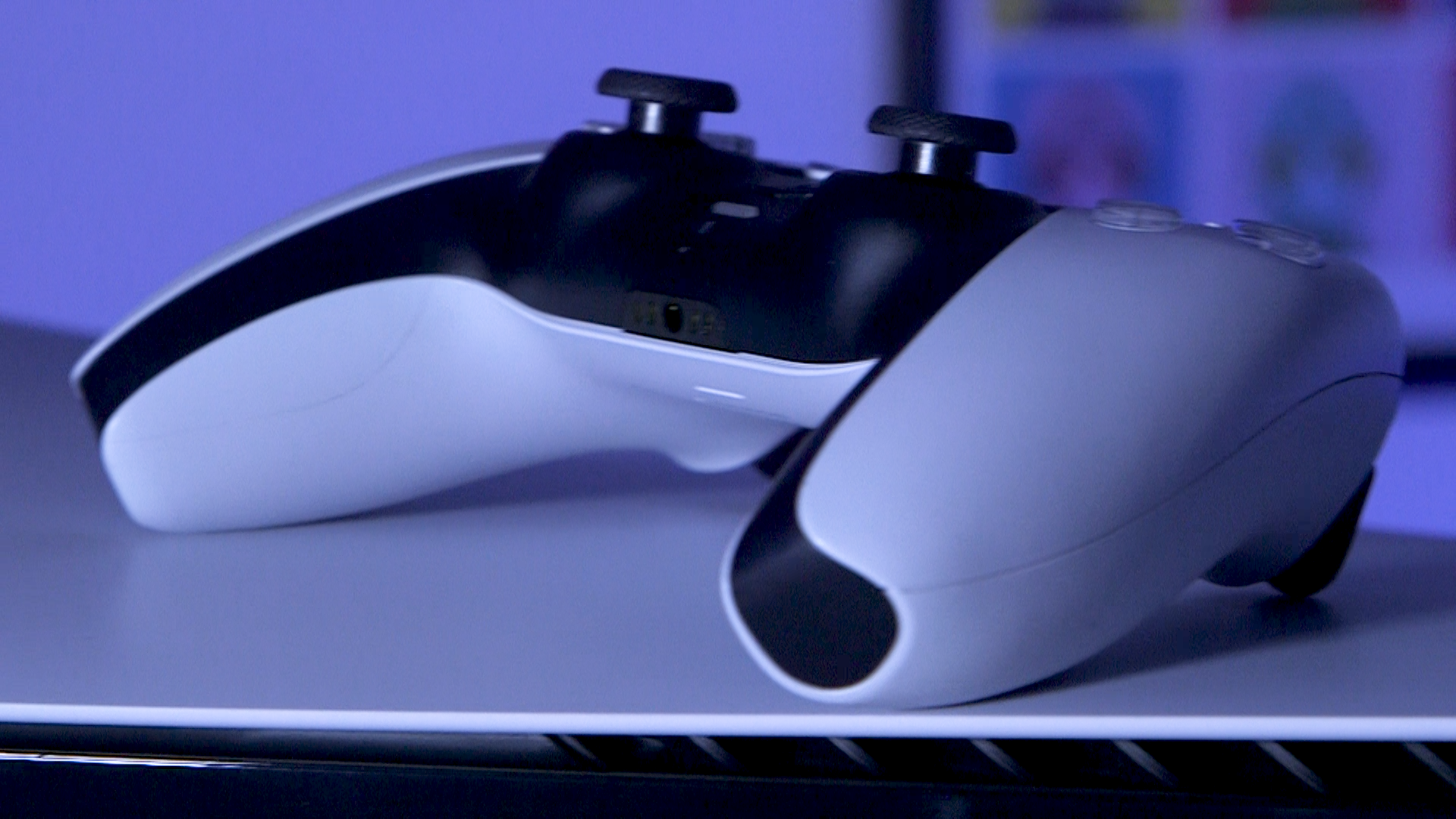
To start with, you'll need to connect your DualSense PS5 controller to your console using the USB cable that comes included in the box.
Plug the thicker end of the USB into one of the console's USB ports and the thinner end into the top of your controller – then hold down the PlayStation button on your controller until the light comes on.
Setting up your PS5
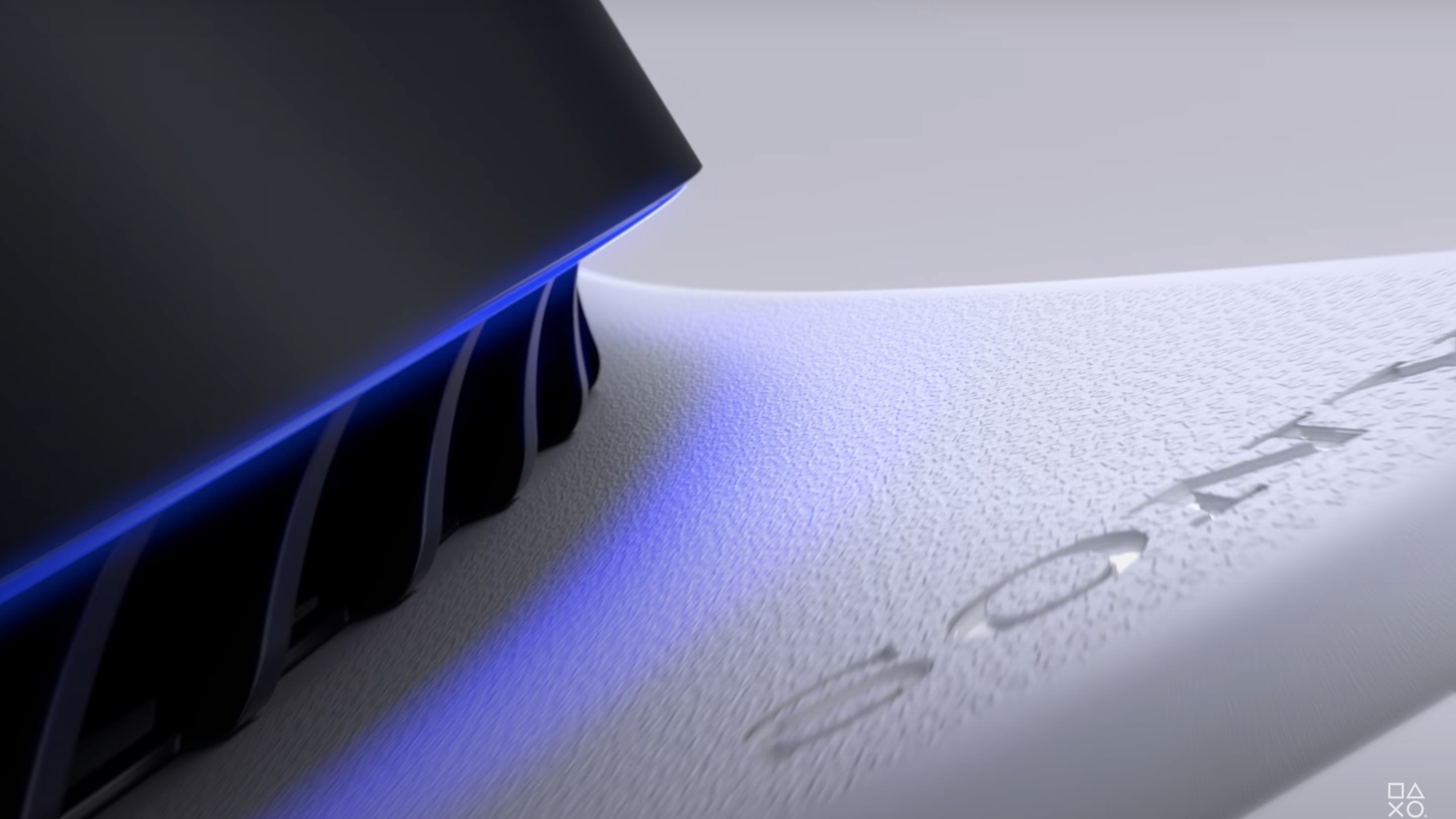
After you've done all this, you then simply follow the on-screen instructions to set up your PS5 or PS5 Digital Edition. You can customize your settings, link the console to your PSN ID and even get a head start on downloading some PS5 games and apps.
After you've followed the instructions to set up the console and established your settings, you should be greeted by a 'Welcome to PlayStation 5' screen. From there, you can dive straight into PlayStation goodness.
- PS5 vs Xbox Series X: which console should you buy?
Source: https://www.techradar.com/in/how-to/how-to-set-up-your-ps5-or-ps5-digital-edition
0 Response to "Visual Studio Edit and Continue Setting"
Publicar un comentario